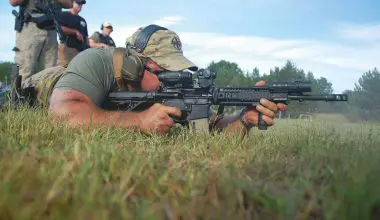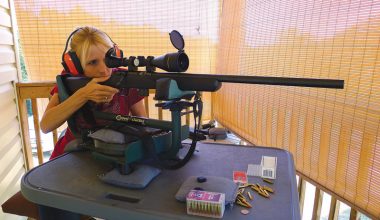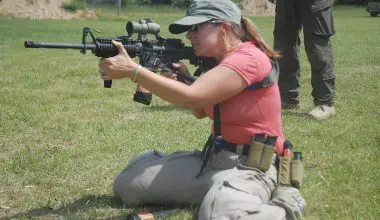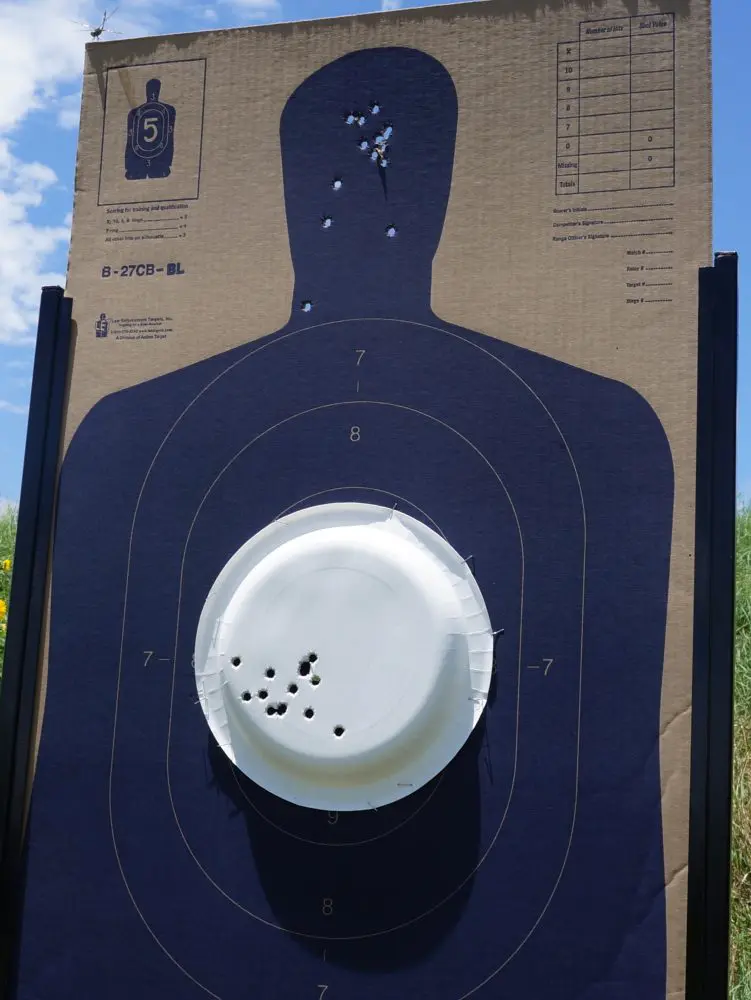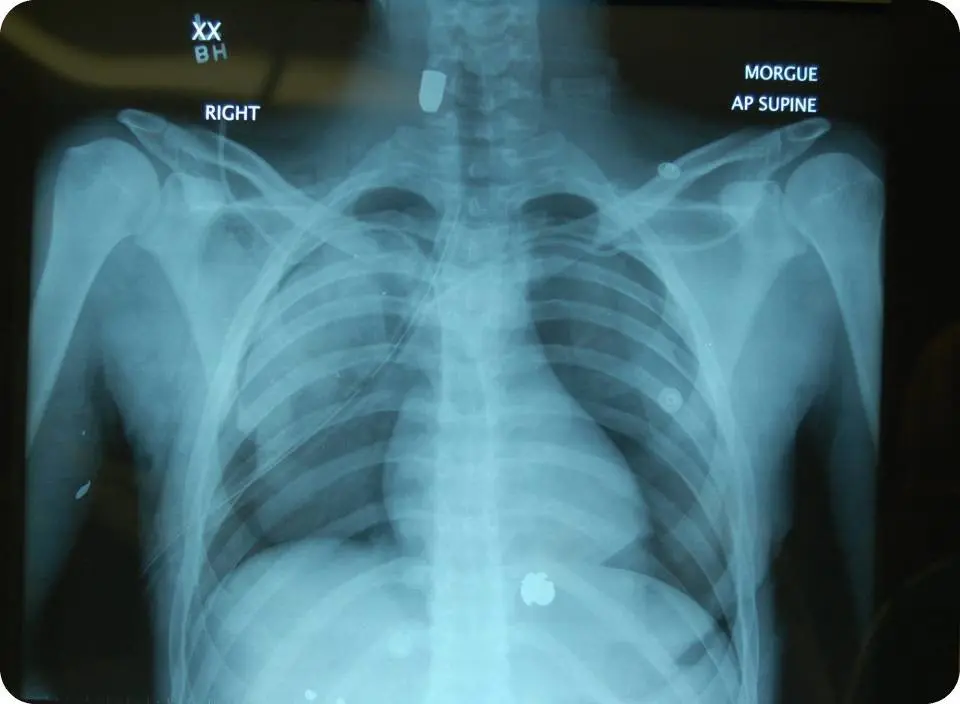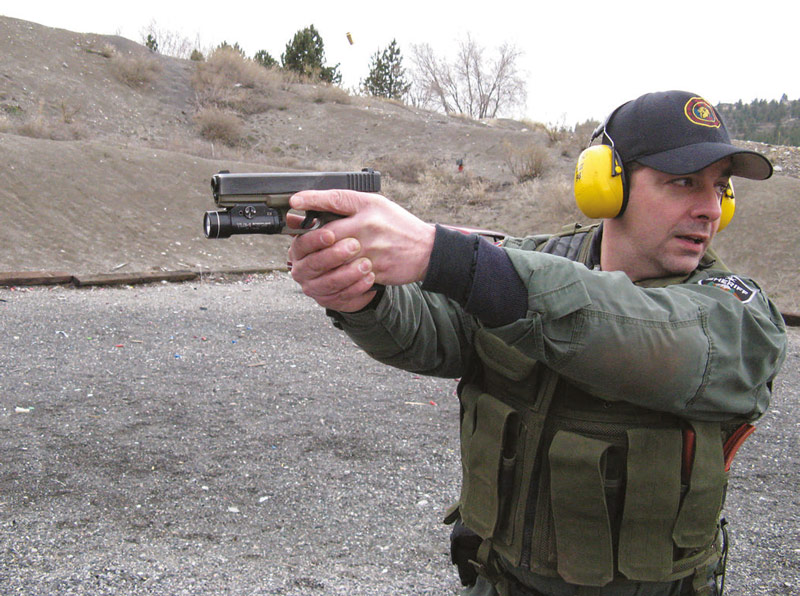
Quit scanning!
OK, I’m not serious about quitting—I just wanted to get your attention, and to think about when and where looking for another threat is a good idea.
As best I can determine, scanning grew out of an FBI report that 67% of the time there was more than one opponent. The FBI is good at studies, but the last, maybe the only, FBI gunfighter was Walter Walsh—and he chased John Dillinger.
I’m as guilty as the next guy when it comes to emphasizing scanning. In a gun kata I developed, the shooter shoots, then scans left, right and rear in a choreographed series of movements.
It slapped me upside the head when I watched some young Colorado students go through the motions without ever realizing what they were doing and more importantly why they were doing it. They were all doing what Clint Smith calls the Range Macarena, and had no idea why.
Table of Contents
BREAKING TUNNEL VISION
I remember at Gunsite scanning left and right, 45 degrees, over the muzzle of the gun. The idea was to break tunnel vision and see if anybody else needed to be shot. This has evolved into doing a Linda Blair in The Exorcist impersonation where we twist our heads 360 degrees or turn our backs to someone we’ve just shot while we look for another goblin to poke holes in.
Breaking tunnel vision is a good idea—we’ve all experienced it. There may well be another threat out there, depending largely on where we are at the time of the fight. The bad part is that we’re training our students to get off the trigger and start looking for something that may be there, while we know that there is something in front of us that needed to be shot—and may need shooting again.
What I’m seeing is the shooter presents from guard or holster, fires some shots, then jumps off the trigger and starts looking for another fight before the round has left the barrel. I think this is really a bad idea and that we should modify what we do. Fortunately, there are an increasing number of trainers who agree.
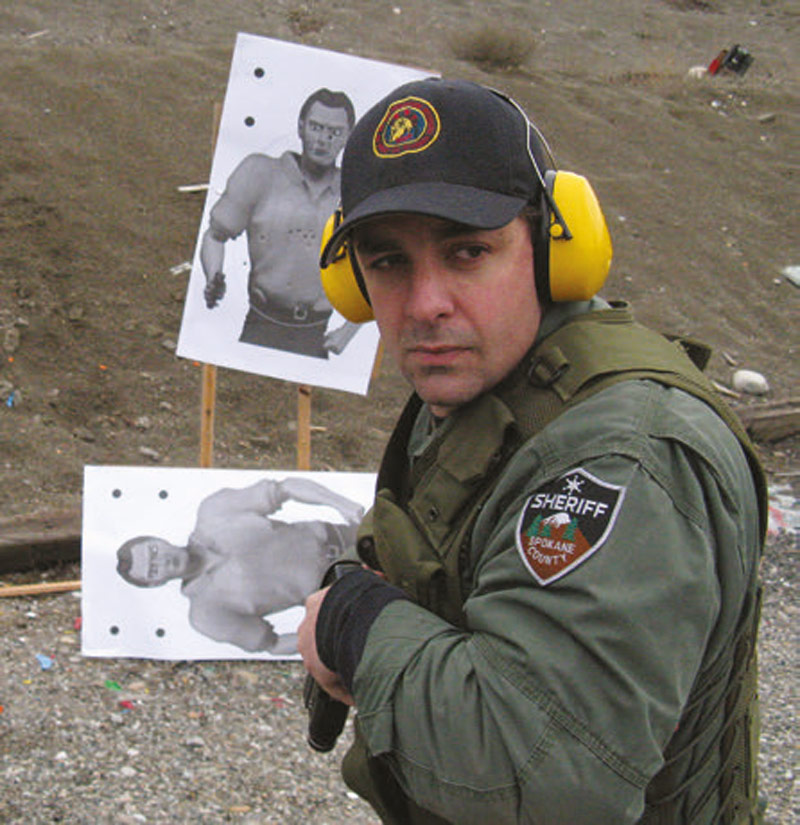

WHO’S WITH ME
First, I borrowed a page from Ed Marsters. Ed and I worked together for years in Alaska, mostly after he retired from Anchorage PD. Ed’s mantra is to shoot the needed number of shots, get back on the front sight while resetting the sear, keep the finger on the trigger, then ask yourself, “Did I hit him? Did it work?” If the critter is still there, it didn’t work and he should be shot again. If it’s gone, find it and see if it needs to be shot some more.
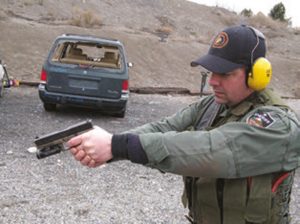
The next part isn’t new, and some of the “instructors” in police academies are gonna get their knickers knotted over this, but the following does not make sense to me.
“Finger straight!” is always shouted at recruits, immediately followed by “Scan.”
The fallacy is that once the trigger finger is indexed, we can muzzle everything and everybody while we look for another target. The problem is that the first guy might need to be shot some more.
A better solution is to track the shot guy to the ground while the trigger finger is still on the trigger. If he needs to be shot some more, shoot him some more. Watch him for a few seconds, totally ready to shoot, and only then break missile lock and radar tone while you index and look for goblin number two.
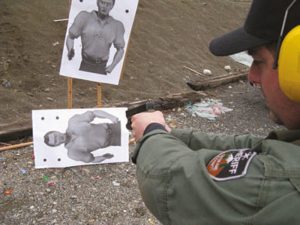
You know that guy number one was ugly enough to shoot, you shot him, you make sure he doesn’t need to be shot some more, then you index and scan. Even though you hit him and he fell, the fight may not be over. If you have to shoot some more, having the trigger finger on the trigger helps. You’re not violating Rules Two or Three because you are on target and ready to shoot. As soon as you’re pretty sure you don’t need to shoot guy number one some more, the finger goes straight and you look around.
THE ALASKAN WAY
I’ve changed the way I’m training guys. Once I’ve taught them TTPs for scanning, I emphasize that it’s something they can and should do—it isn’t the thing that they have to do all the time. Tactics and techniques are determined by terrain and circumstance, and what might be a good idea one time might be a bad idea another time.
I have a dashcam video that shows one of my students killing a guy in Alaska. She hits him four times in the chest then tracks him to the ground, muzzle on him. I can’t see where her trigger finger is, and she doesn’t remember. She stays on target while another officer runs around behind her, flanks out to the left, then approaches the bad guy. The shooter never quits covering the guy and never looks around, until the film stops. I think she did a great job.
Another Alaskan, a trooper, stepped off a snowmachine (snowmobile to those in the lower 48) to take a crazy guy to the hospital. The guy stepped out the door with a Mini-14 in his hands and started to swing it toward Jon. Jon stepped right, drew his pistol, and fired one round at 11 yards. When he came out of recoil, the guy was gone. He stayed on trigger and lowered the muzzle to see the bad guy. The guy was dead, shot through the heart, so Jon indexed, scanned and approached.
The important thing is that he made sure the guy was down before he got off the trigger and started looking around. Incidentally, it was 50 below zero, so there weren’t a lot of folks around.
SAFETY CIRCLE
Another tactic that has some problems is going to Sul or the Safety Circle and turning your body 360 degrees so that your back is to the person you just shot. The idea is that you can safely turn 360 degrees with the gun in hand (true) and that you will face the second threat faceon (also true).
The principle is sound, but in application I see the shooter fire a shot or two and then spin around as though they are auditioning for Dancing With The Stars. Again, the problem is that the first guy you shot might not be impressed. I prefer to think of this as something your partner should do while you cover the first guy.
Another problem I see is that the shooter always performs a scan. Every copper out there has threatened to shoot a bad guy. I’ve had several instances where I threatened to shoot, and the guy said something about mothers and sex acts and told me to go ahead, shoot him. One guy took a step forward into what was then no longer a gunfight—it became a hands and feet fight.
I recreated this scenario during a class, and almost every shooter scanned before holstering, after being told the bad guy was moving toward him. As a result, I brief all students that when I yell “Holster,” it’s a speed holster—no scan. Secure the gun and get the hands up in a fighting stance.
Most police departments in the U.S. have fewer than 20 officers. Most of the time there is one officer on duty or two officers at different ends of the county. The trooper on a lonely road at night might have to shoot one of the occupants of a car he’s stopped. Does he need to look behind to see if someone has magically appeared, or should he concentrate on the car that he can see, at least peripherally?
I never worked where there was consistent backup. Alaska is six times the size of California and has 250 troopers. One road troop might handle 50,000 square miles on a shift. In most cases, I could focus on the guys in front of me, certain that there wasn’t another soul within miles.
Most officers don’t have that “luxury,” so situational awareness is important. Urban/suburban officers need to know who and what is around them, before and after the fight, but need to understand and train for the primary threat that they face.
Consider this in training: first, shoot the middle of what you can see until you can’t see it anymore. Follow it to the ground with your finger on the trigger, ready to shoot it some more. Breathe. Confirm as best you can that the threat is gone. Index and scan.
Scanning and situational awareness are good things. However, when the time comes that someone has to be shot, make sure the fight is over before you start hunting for another fight.
As Clint Smith says: “Just because you shot doesn’t mean the fight is over. It just means you had your turn.”
